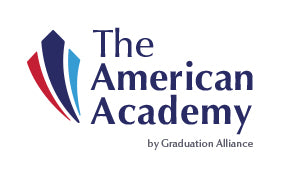What Is Non-Traditional Education?
Posted on July 12 2024

Non-traditional schools, also called alternative schools, offer unique learning experiences for students who can’t or won’t attend traditional public schools. This is a broad definition, so let’s dig a little deeper into some of the similarities and differences between traditional public schools and alternative education.
Nationwide, about 87% of children were enrolled in a traditional public school in 2022, down more than three percentage points from 90.7% in 2012, according to Census Bureau data.
While some students are dropping out of school, most are embracing unique learning environments—such as charter schools, homeschooling, private schools, special programs for gifted children, and GED preparation programs—to earn their high school diplomas. About half a million students were enrolled in alternative schools in 2013-14, according to a ProPublica survey. These numbers have not been updated to account for students who left public school during the pandemic or families who have taken advantage of recent voucher programs.
With public school enrollment falling nationwide in favor of alternative schooling options, many parents who have not already made changes in their children’s schooling are beginning to ask, “What is non-traditional education?”
Alternative high schools are becoming more and more popular among parents and students. Historically, they were reserved for students who had stopped attending traditional school or struggled with disciplinary issues, but this type of education has expanded over the years to include opportunities for students who need or want something outside of the traditional public school system.
Modality
Traditional school takes place in a classroom within a school building located on a school campus. Non-traditional learning could be in a similar location, or it could be blended—part-time on campus and part-time online. Or, it could be entirely online. Students could spend half of the school day at a vocational center, community college campus, or art school.
There is a lot of variety in modality, allowing students to find the best fit for their learning style and needs.
Class Size
In 2022, the national average class size in the U.S. is 24 students. Non-traditional schools can have as few as a single student in a class, such as in the case of homeschooling. In many alternative learning environments, class sizes are smaller, allowing students to receive more individualized attention from teachers.
Teaching Methods
Alternative education also opens the door for different teaching methods and learning styles. While traditional schools typically emphasize lectures, testing, memorization, and a unified curriculum, alternative education embraces experiential learning, Montessori, classical education, and competency-based learning.
Schedules
Regular public school usually starts around 8 a.m., maybe earlier, and goes until early afternoon. This works for some students, but not all, especially those who are working, pregnant and/or parenting, struggling with mental health or chronic illness, or traveling due to extracurriculars.
Alternative programs often have flexible schedules. Some offer evening courses, blended/hybrid schedules, or asynchronous classes—asynchronous just means students can complete their work anytime and anywhere without having to log in at a set time.
Graduation Requirements
Students of traditional high schools are required to meet graduation requirements, usually determined by the state or the school district. If a student doesn’t meet the requirements, they won’t graduate. Alternative high schools often have flexible graduation requirements and accept things like work experience as class credit.
The American Academy
The American Academy is a 100% online private high school serving students ages 13 and up. We offer students the opportunity to earn their high school diploma from start to finish or take individual courses in a supportive, learning environment. We are fully accredited, so credits earned through individual courses should transfer to your local high school.* And if you choose to complete your entire high school diploma through The American Academy, you’ll graduate with an accredited diploma accepted by colleges and universities, employers, and the U.S. military.
*Talk with your guidance counselor before enrolling in individual courses to ensure your school will accept them.





